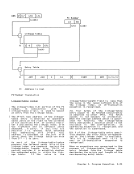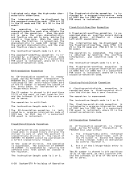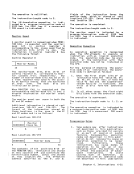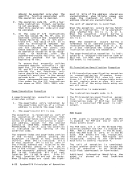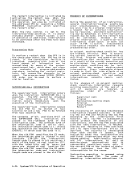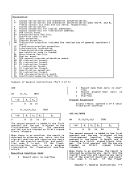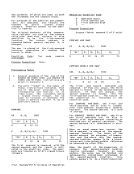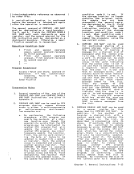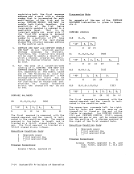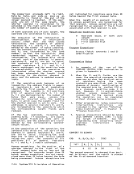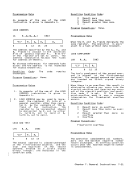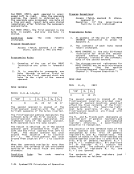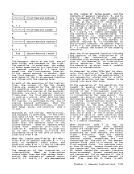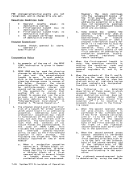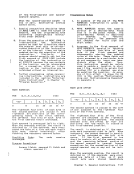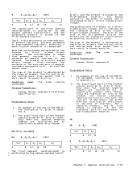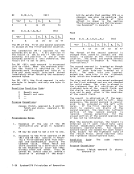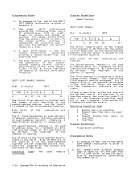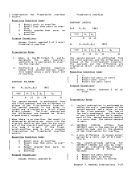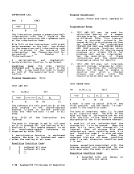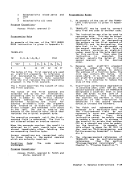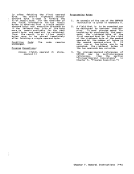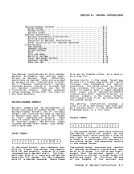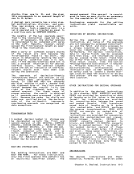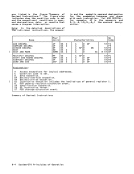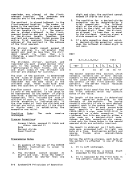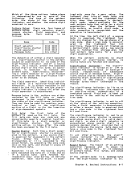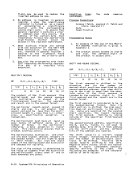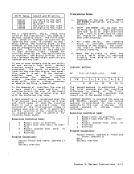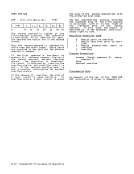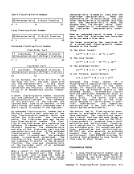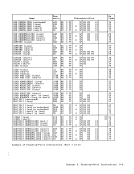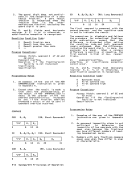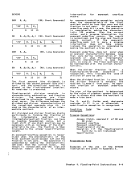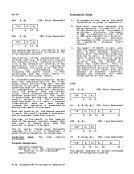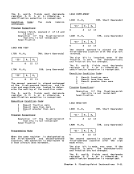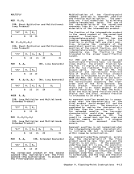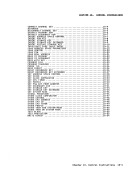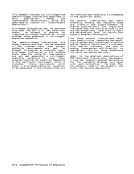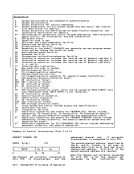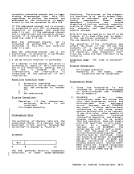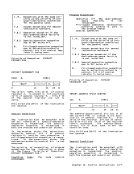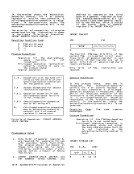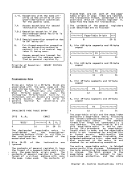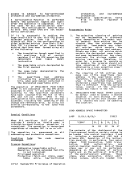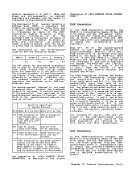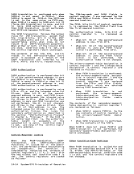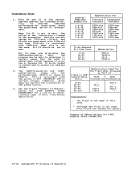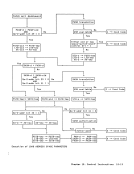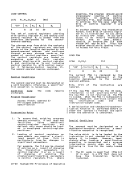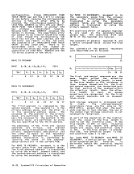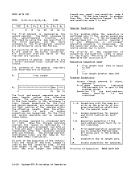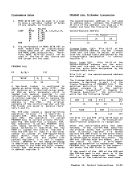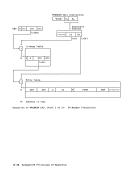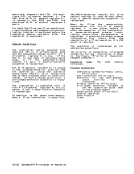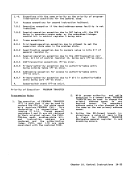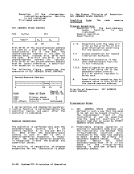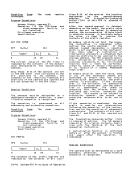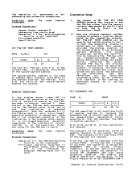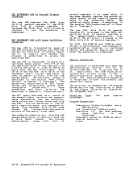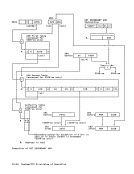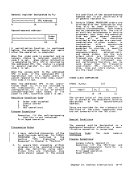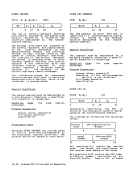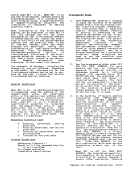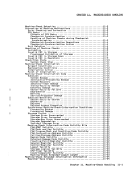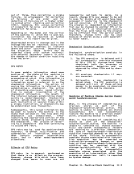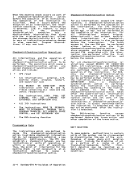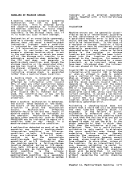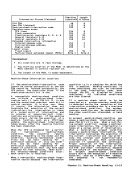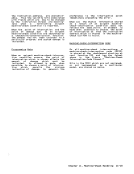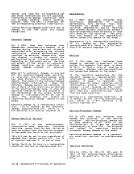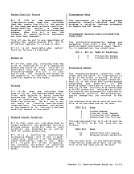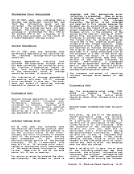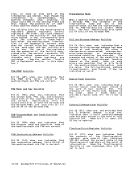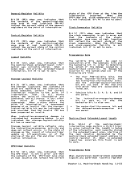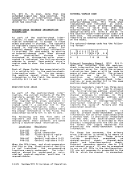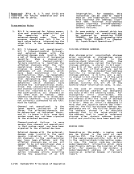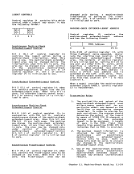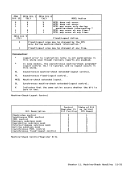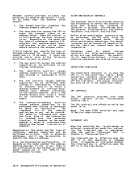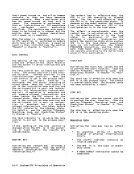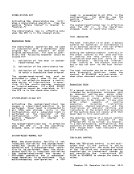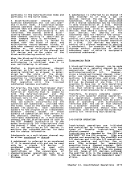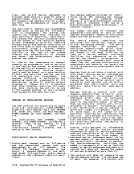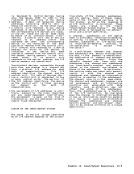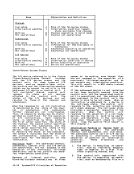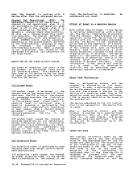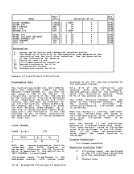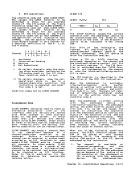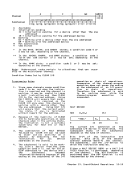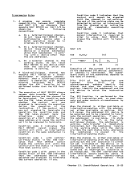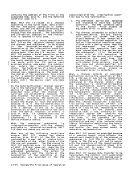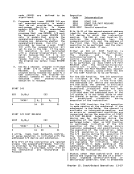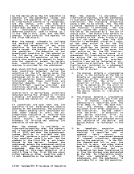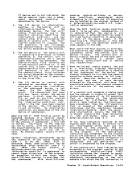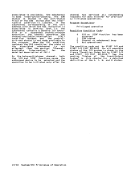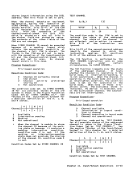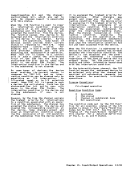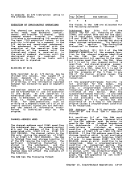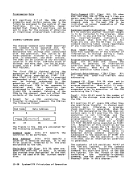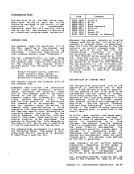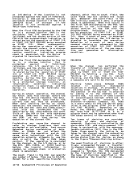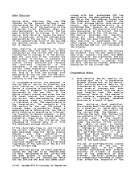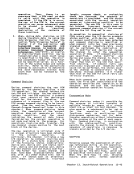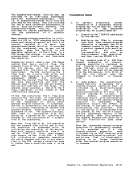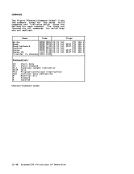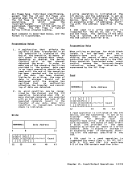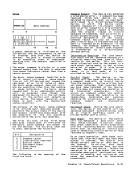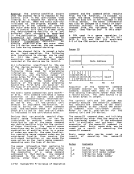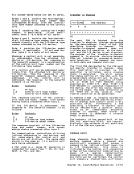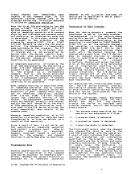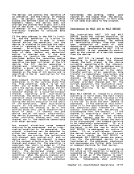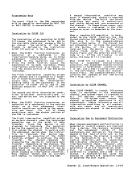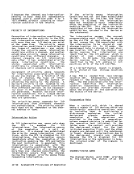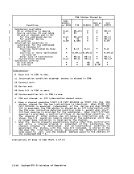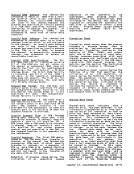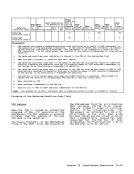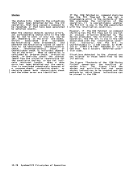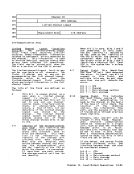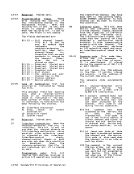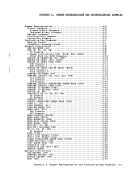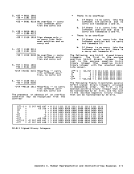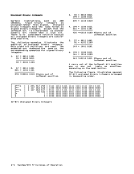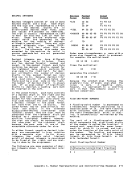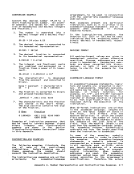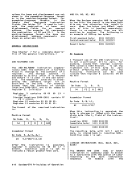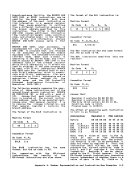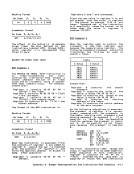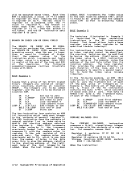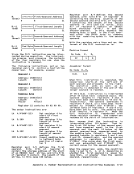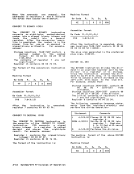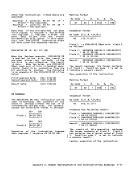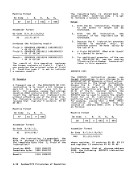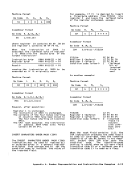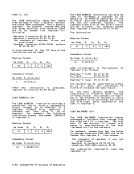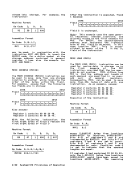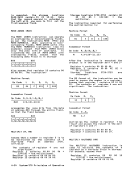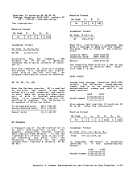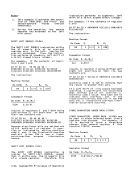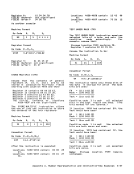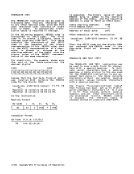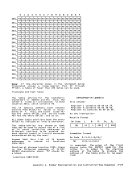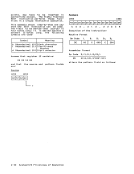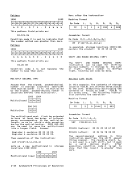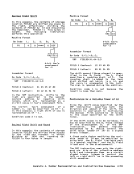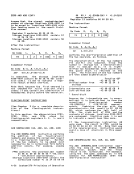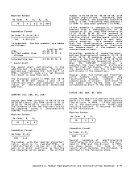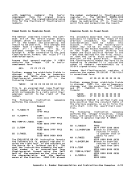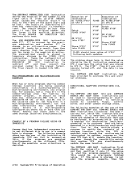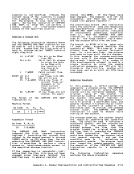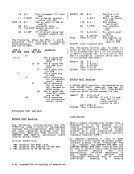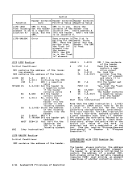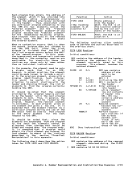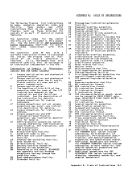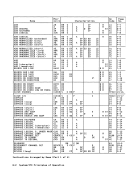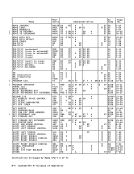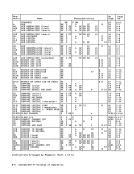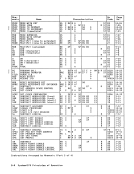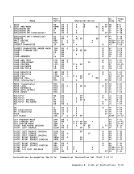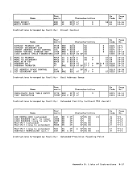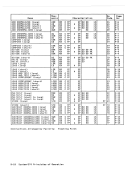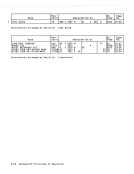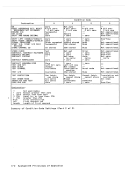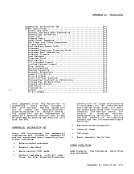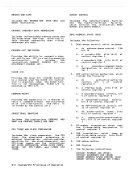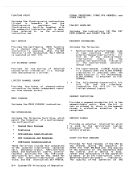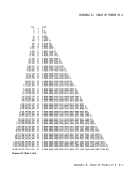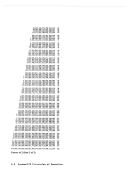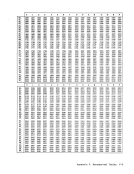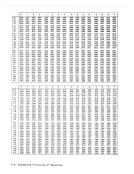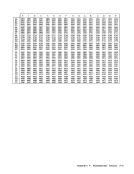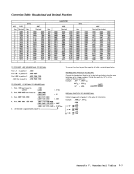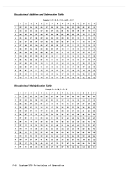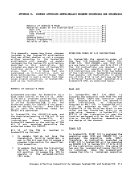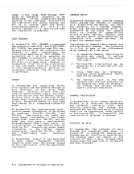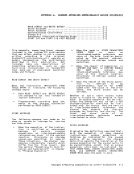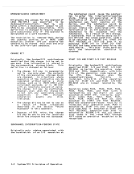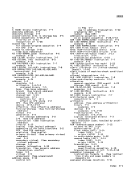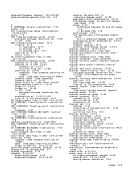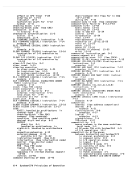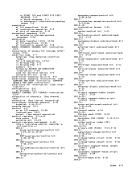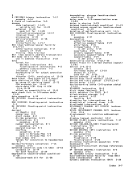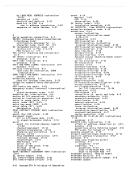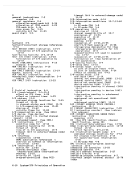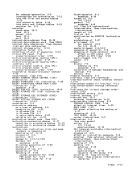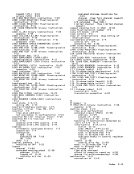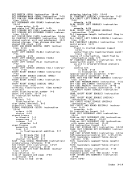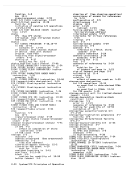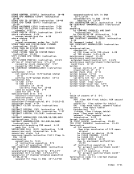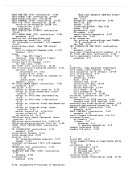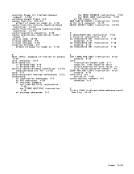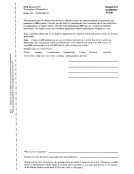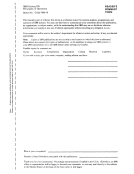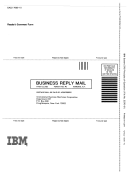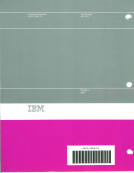The device can control the duration of
anoperation and the timing of channel
end.On certain operations for which
blocksare defined (such as reading from
magnetic tape), the device does not
provide the channel-end signal until the
end of the block is reached, regardless
of whether or not the device has been
previously signaled to concludedata transfer.
If the data address in theCCW is inval id, and the operation is a write or
control operation, no data is trans
ferred during the operation, and the
device is signaled to conclude the oper
ation in response to the first service
request.On writing, devices such as
magnetic-tape units request the first
byte of data before any mechanical
motion is started and, if the data
address is invalid, the operation is
concluded before the recording medium
hasbeen advanced. However, since the
operation has been initiated at theI/O device, the I/O device generates a
channel-end interruption condition.
Whether a block at theI/O device is
advanced when no data is transferred
depends on the type ofI/O device and is
specified in theSL publication for the I/O device.
When command chaining takes place, the
subchannelis in the working state from
the time condition code0 is set for
STARTI/O or START I/O FAST RELEASE
until the device signals channel end for
the last operation of the chain.On a
selector channel or a block-multiplexer
channel operating with multiplexing
inhibited, the device executing theI/O operation stays connected to the channel
and the channel is in the working state
during the entire execution of the chain
ofI/O operations. When multiplexing
occurs, anI/O operation in the burst
mode causes the channel to be in the
working state only while transferring a
burst of data. If channel end and
device end do not occur concurrently,
the device disconnects from the channel
after providing channel end, and the
channel can in the meantime communicate
with other devices.
Any unusual situations cause command
chaining to be suppressed and an inter
ruption condition to be generated. The
unusual situations can be detected by
either the channel or the device, and
the device can provide the indications
with channel end, control-unit end, or
device end. When the channel is aware
of the unusual situation by the time the
channel-end signal for the operation is
received, the chain is ended as if the
operation during which the situation
occurred were the last operation of the
chain. The device-end signal subse
quently is processed as an interruption
condition. When the device signalsunit check or unit exception with control
unit end or device end, the subchannel
terminates the working state uponreceipt of the signal from the device.
The channel-end indicationin this case
is not made available tothe program.
Termination~ HAll !LQ ~ HALT DEVICE The instructions HALT I/O and HALT DEVICE cause the current operation at
the addressed channel or subchannel to
be immediatelY terminated. The method
of termination differs from that used
upon exhaustion of count or upon
detection of programming errors to the
extent that termination by HALTI/O or
HALTDEVICE is not necessarily contin
gent on the receipt of a service request
from the device.
When HALTI/O is issued to a channel
operating in burst mode, the channel
issues the halt signal to the device
currently operating with the channel,
regardless of the device address speci
fied by the HALTI/O instruction. If
the channel is involved in the data
transfer portion of an operation, data
transfer is immediately terminated, and
the device is disconnected from the
channel. If the channel is executing a
chain of operations and the device has
already provided channel end for the
current operation, the instruction caus
es the device to be disconnected and
command chaining to be immediately
suppressed.
When HALTDEVICE is issued to a channel
operating in burst mode, the halt signal
is issued to the device involved in the
burst-mode operation only if that device
is the one to which the HALTDEVICE is
addressed. If the operation thus termi
nated is in the data-transfer portion of
the operation, data transfer is imme
diately terminated, and the device is
disconnected from the channel. If the
channel is executinga chain of oper
ations and the device has already
provided channel end for the current
operation, HALTDEVICE causes the device
to be disconnected and command chaining
to be immediately suppressed. If, on a
selector channel, the device involved in
the burst is not the one to which the
HALTDEVICE is addressed, no action is
taken.If, on a multiplexer channel,
the device involved in the burst is not
the one to which the HALTDEVICE is
addressed, HALTDEVICE causes any opera
tion for the addressed device to be
terminated at the addressed subchannel
and suppresses any further data transfer
or command chaining for that device.
When HALT
for which
suspended
code 2 is
ating in
device.DEVICE is issued to a device
anI/O operation is pending or
at the subchannel, condition
set as if the channel is oper
burst mode with a different
Subsequently, when conditionsChapter 13. Input/Output Operations 13-57
an
end.
blocks
magnetic tape), the device does not
provide the channel-end signal until the
end of the block is reached, regardless
of whether or not the device has been
previously signaled to conclude
If the data address in the
control operation, no data is trans
ferred during the operation, and the
device is signaled to conclude the oper
ation in response to the first service
request.
magnetic-tape units request the first
byte of data before any mechanical
motion is started and, if the data
address is invalid, the operation is
concluded before the recording medium
has
operation has been initiated at the
channel-end interruption condition.
Whether a block at the
advanced when no data is transferred
depends on the type of
specified in the
When command chaining takes place, the
subchannel
the time condition code
START
until the device signals channel end for
the last operation of the chain.
selector channel or a block-multiplexer
channel operating with multiplexing
inhibited, the device executing the
and the channel is in the working state
during the entire execution of the chain
of
occurs, an
mode causes the channel to be in the
working state only while transferring a
burst of data. If channel end and
device end do not occur concurrently,
the device disconnects from the channel
after providing channel end, and the
channel can in the meantime communicate
with other devices.
Any unusual situations cause command
chaining to be suppressed and an inter
ruption condition to be generated. The
unusual situations can be detected by
either the channel or the device, and
the device can provide the indications
with channel end, control-unit end, or
device end. When the channel is aware
of the unusual situation by the time the
channel-end signal for the operation is
received, the chain is ended as if the
operation during which the situation
occurred were the last operation of the
chain. The device-end signal subse
quently is processed as an interruption
condition. When the device signals
unit end or device end, the subchannel
terminates the working state upon
The channel-end indication
is not made available to
Termination
the addressed channel or subchannel to
be immediatelY terminated. The method
of termination differs from that used
upon exhaustion of count or upon
detection of programming errors to the
extent that termination by HALT
HALT
gent on the receipt of a service request
from the device.
When HALT
operating in burst mode, the channel
issues the halt signal to the device
currently operating with the channel,
regardless of the device address speci
fied by the HALT
the channel is involved in the data
transfer portion of an operation, data
transfer is immediately terminated, and
the device is disconnected from the
channel. If the channel is executing a
chain of operations and the device has
already provided channel end for the
current operation, the instruction caus
es the device to be disconnected and
command chaining to be immediately
suppressed.
When HALT
operating in burst mode, the halt signal
is issued to the device involved in the
burst-mode operation only if that device
is the one to which the HALT
addressed. If the operation thus termi
nated is in the data-transfer portion of
the operation, data transfer is imme
diately terminated, and the device is
disconnected from the channel. If the
channel is executing
ations and the device has already
provided channel end for the current
operation, HALT
to be disconnected and command chaining
to be immediately suppressed. If, on a
selector channel, the device involved in
the burst is not the one to which the
HALT
taken.
the device involved in the burst is not
the one to which the HALT
addressed, HALT
tion for the addressed device to be
terminated at the addressed subchannel
and suppresses any further data transfer
or command chaining for that device.
When HALT
for which
suspended
code 2 is
ating in
device.
an
at the subchannel, condition
set as if the channel is oper
burst mode with a different
Subsequently, when conditions













































































































































